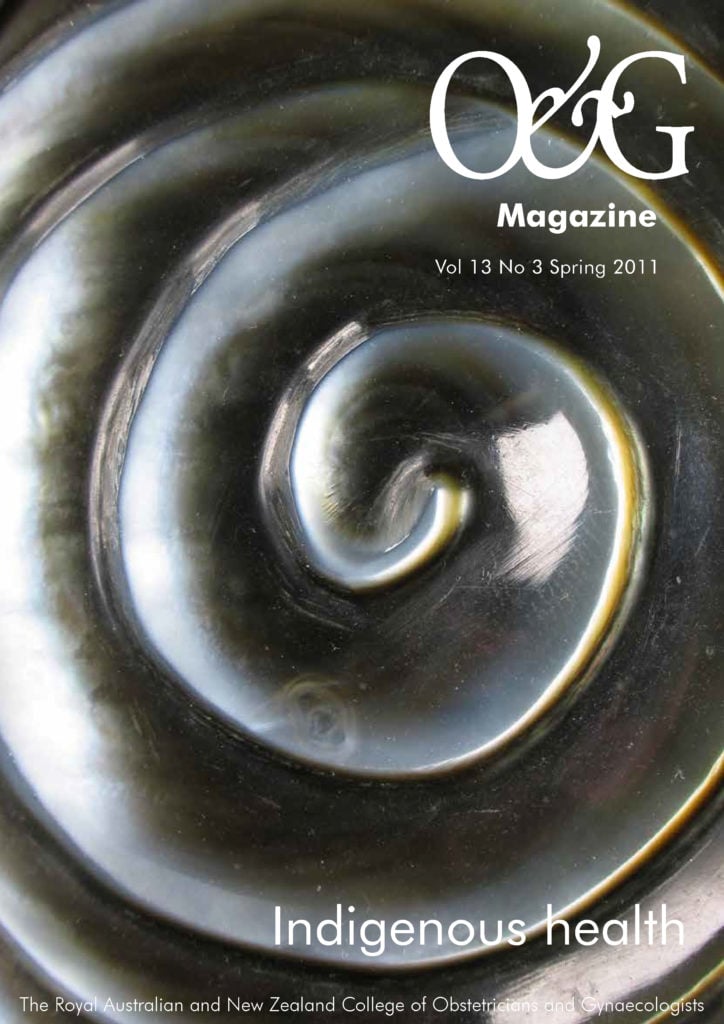Evidence shows that when the medical workforce that serves a community is representative of it, in terms of gender and ethnicity, the result is an improvement in health outcomes.
In New Zealand, we currently offer some 14 opportunities per year in the RANZCOG Integrated Training Program (ITP) for O&G. These opportunities are oversubscribed and, as a result, many hopeful applicants are turned away. The applicants come from a broad range of ethnic groups, reflecting the increasing diversity of the New Zealand population. However, there never seem to be enough young Maori medical graduates who consider O&G as their career of choice. We need to attract more.
My call for more Maori medical graduates to consider O&G as their career choice takes into account my perspective as the layperson on the New Zealand Committee of RANZCOG as well as the ethnic drivers that feature in New Zealand’s national statistical data. I agree with those who argue that gender and ethnic balance brings positive qualities to our health services.
Maori women’s health challenges
Statistical data on Maori women’s health indicate that there are higher health needs across the spectrum than the general population. Childbirth and cervical cancer within the population of Maori women are two such examples:
- Maori women are younger mothers (average 26 years old in comparison to an average in the wider population of 30 years old) and have more children than the total population (2.8 in comparison to 2.1). They are also more likely to be single mothers and, although there has been a significant decrease in recent years, their babies have a higher mortality rate (6.8 versus 5.1).1
- Four times more Maori women than non-Maori die from cervical cancer, and Maori women are less likely to undergo screening.2
The combination of personal cultural sensitivity and statistically obvious needs suggests there is a clear added value to the outcome of women’s health and that of their children and whanau (family) from the recruitment of more Indigenous graduates to the field of O&G.
Over the last few years in New Zealand there has, from time to time, been an extended advertising campaign on television to encourage Maori women of all ages to take responsibility for their gynecological health. With this call for more Maori medical graduates to take the profession of O&G, there is the potential to the strengthen the base we are currently working from.
Maori doctors in New Zealand
The New Zealand Medical Workforce in 2010, released by the Medical Council of New Zealand in June 2011, reported that the proportion of doctors who identified as Maori remained at 3.0 per cent, and the proportion of Pacific doctors dropped from 1.4 per cent to 1.3 per cent.3 It is evident from these figures that both Maori and Pacific doctors continue to be underrepresented compared to their proportion of the population. It is also useful to note that doctors who identified as Maori were younger than the wider workforce average. These doctors reported their main work role as:
- General practitioner (32 per cent).
- Specialist (24 per cent).
- Registrar (17 per cent).
- House officer (16 per cent).3
RANZCOG ITP applicants are assessed on a number of fronts, including an interview by a panel of four Fellows, a Trainee representative and the layperson (me). During the interview there is an opportunity for the applicant to discuss the reasons why they desire to specialise in O&G. I have observed from these interviews that the vast majority have had an interest in women’s health from early on in their medical training. It would seem that the earlier the College can gain access to Indigenous medical trainees, the better the opportunity to influence their choices for their future career. For example, if a medical trainee has a positive experience during their O&G run and feels well integrated into the team in a supported learning environment, he or she is more likely to seek to pursue a career in O&G.
References
- Statistics New Zealand available at: http://www.stats.govt.nz . Women’s Health Action Trust Maori Women’s Health available at:
- http://www.womens.health.org.nz .
- The New Zealand Medical Workforce in 2010 available at: http://www.mcnz.org.nz/portals/0/publications/Workforce_2010.pdf .






Leave a Reply